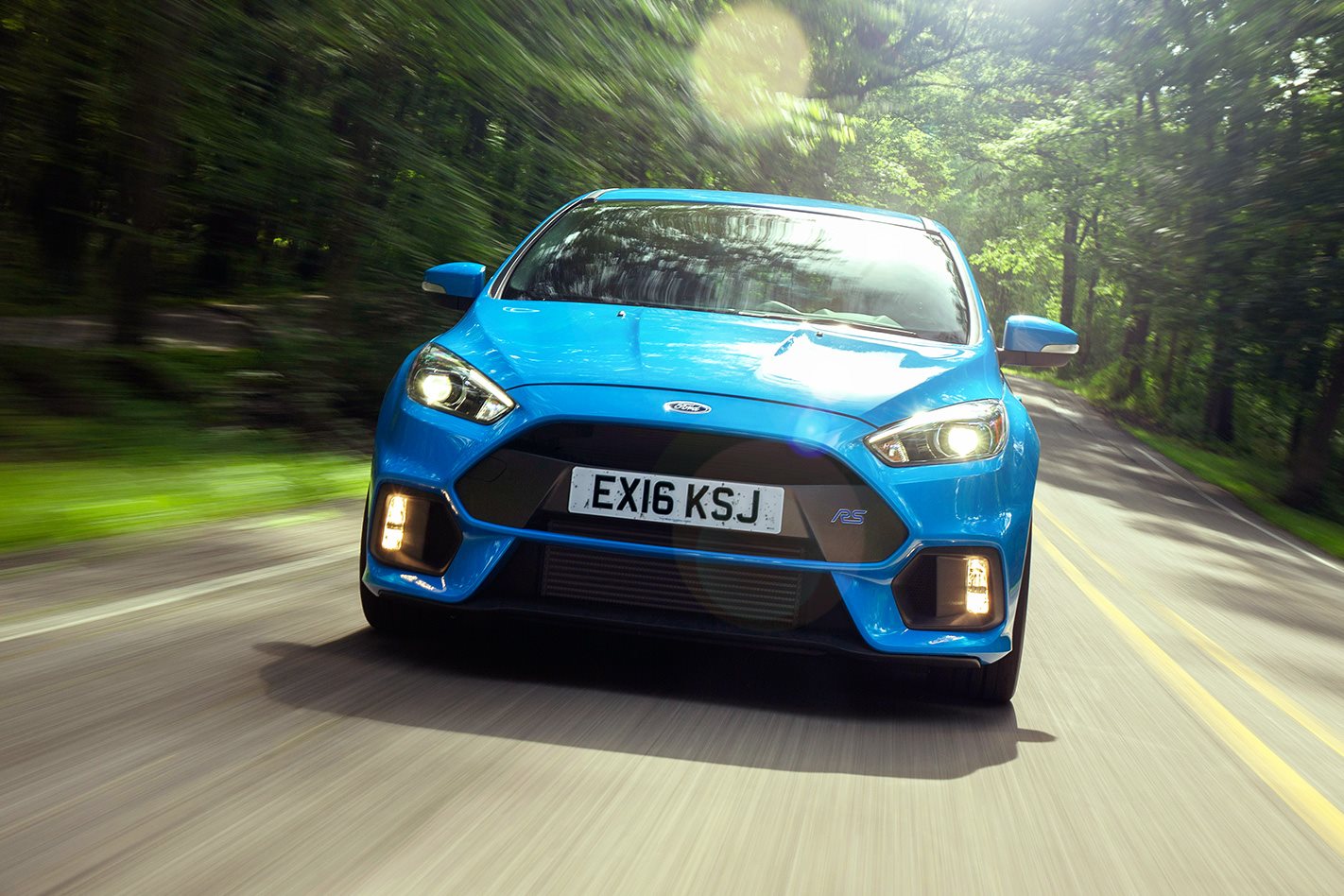50 years after Ford took sweet revenge on Ferrari with a 1-2-3 finish, we drive to Le Mans in a Ford Focus RS to watch as Ford strives to repeat history with the new Ford GT.
Well before we reach Rouen, our bingo card of Le Mans journey must-sees is almost fully ticked. There’s been a broken-down TVR, a Morgan being driven by a chap wearing a tweed suit, three Porsche 911 GT3s, a pack of Caterhams powering their way through a heavy rain shower with their tiny wipers flapping ineffectually, even a British-registered Lamborghini Aventador that, clearly confused by all this continental drive-on-the-right nonsense, leaves a service area on the wrong side of the road and narrowly avoids head-butting a Jaguar F-Type R. The only significant omission is the one I thought I’d see first, a speed trap.
The French police are drawn to the influx of British supercars heading to the 24 Hours like piranhas to a raw steak.
About 80,000 people come from the UK each year, many driving performance machinery with a disregard for limits that suggests an expensive speeding ticket is a badge of honour.

Only there’s nobody to do the slapping.
It’s only when a long convoy of police vans passes in the other direction, blue lights flashing, that we piece it together.
France is hosting the European soccer championships and crowd trouble at early games has clearly rebalanced police priorities. So we’ve got Russia’s notorious ‘ultra’-hooligans – their team is playing tonight in Lille – to thank for our unimpeded passage to Le Mans.
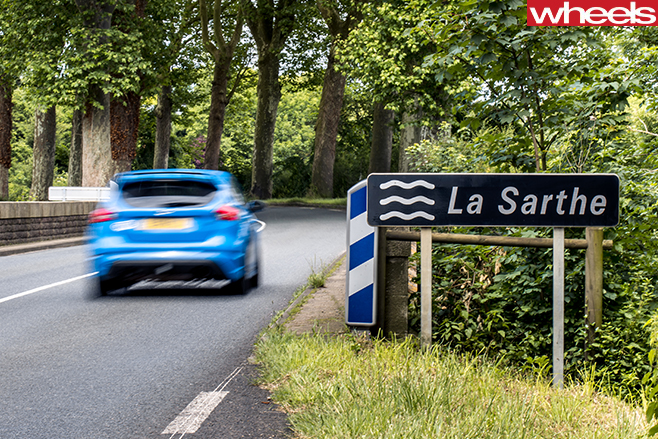
The Focus RS is the perfect way to get there, both for an opportunity to have a proper run in one ahead of sales starting in Australia in July, and because it’s been produced by the same Ford Racing team developing the road-going sister of the GT that’s racing at Le Mans.
Getting there is part of the fun. Despite being located deep in France, and run by the extremely French ACO, the 24 Heures du Mans has long been a British favourite. (And will certainly remain so, despite the UK’s vote to leave the European Union four days after this event.)

There are no stickers on the Focus.
There don’t need to be. It’s bluer than a naked Na’vi and comes from a long line of cult RS models, dating back to Capris and Escorts of the early 1970s, that ensures an audience appears every time we stop, which we do often thanks to its pitiful 400km fuel range.
Petrol stations give the chance to experience France’s woeful packaged sandwiches – we’re a long way from haut cuisine – but also for the Focus to draw crowds. One guy practically trips over an AC Cobra in his enthusiasm to get close enough for a selfie. Everybody knows what it is, and the most asked question is whether I’ve tried the Drift Mode yet.

At Rouen we leave the high-speed péage for ‘the old road’. When I first came to Le Mans 20 years ago, there was no toll road and this was the only route; I remember that locals would bring deckchairs and picnics to the side of the road to watch the exodus of crazy rosbifs heading south.
These days most of the traffic sticks to the motorway and, figuring the gendarmes will be sticking close to their natural prey, I let the Focus off the leash.
Speed makes the RS feel instantly better.
It is one of those cars that wants to play hard all the time. An accomplished cruiser, just one that’s happiest travelling at about twice the speed limit. Extra loadings wake up the chassis, the heaving ride improves and the engine revels in a chance to get past 3000rpm, where it really starts to pull hard all the way to the 6800rpm limiter.
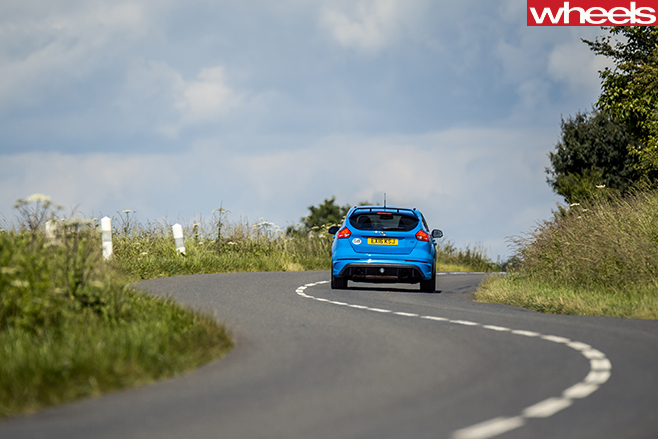
The road is practically empty and arrow straight for kilometres at a time. Despite the need to slow for occasional villages, our average speed is barely compromised.
What’s missing are corners. Occasional roundabouts give the magic torque-splitting rear axle a chance to show off its ability to tighten the cornering line, but otherwise it’s pretty much just along for the ride.
Past Alencon, with just 50km to go, I opt for a further diversion in search of more demanding tarmac, picking a circuitous course based pretty much on how twisty the minor ‘D’ roads look on the map.
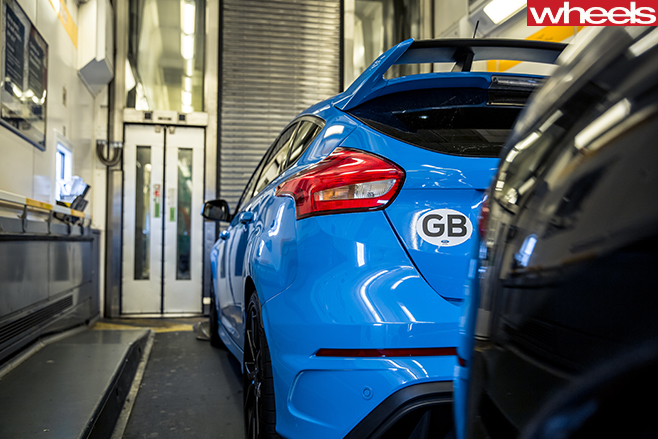
A gravel parking area provides a chance to prove Drift Mode does what it claims, instantly kicking the tail out and then attempting to hold it there. But the clever torque-splitting rear axle is better at real-world stuff, it’s separate electronically controlled clutches on each side vectoring torque to effectively eliminate understeer.
You don’t have to go insanely fast to feel it working, sending a jolt of torque to the outside rear wheel to sharpen turn-in and digging in to tighten the line when the front runs out of grip. The result isn’t smoking oversteer – you need to work hard to make the RS relinquish grip, even in slow corners – rather it’s a car that manages to feel both ultra-keen and impressively stable at the same time.
Taking the scenic route was a good idea.

It’s clear why the roads have been so empty; everyone is already here, and in a vast jam that encircles the town. Having a racetrack that uses public roads gives Le Mans a unique character – you can drive on more than half the course 360 days a year – but does nothing for congestion.
The long drive across town to the accreditation centre then out to Arnage is at barely walking pace, and the heavy clutch pedal gives a deep-burn thigh workout. Although the manual gearshift has been a great companion on the journey down, I’m soon wishing for the dual-clutch auto Ford is said to be developing.
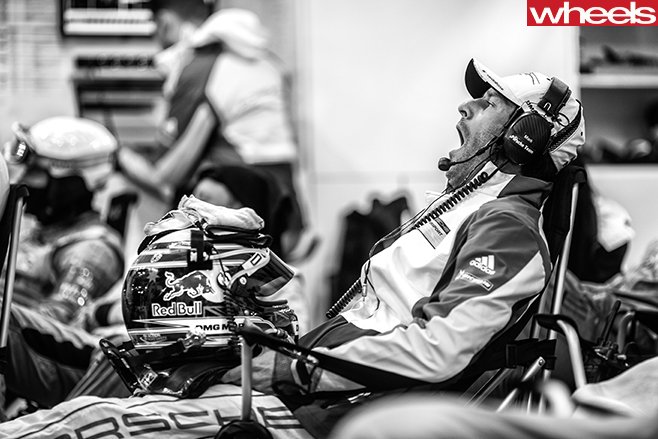
The vibe is good natured, although one drunk stands in the road demanding a burnout in return for letting us past. Not something the all-paw RS would be up for, even if there wasn’t a gendarme standing 10 metres away, although some heavy rubber marks on the road suggest that not everyone has been so careful.
Manufacturers come and go at Le Mans, but Ford’s return after the best part of five decades away does feel special.
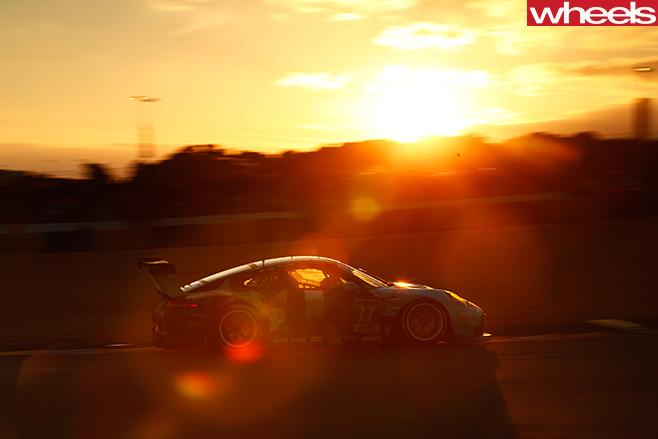
The GT40 project was designed to ramp Ford’s brand throughout the world, but it was also a hugely expensive “screw you” to Il Commendatore. It took three years to finally win the race, and the 1966 victory brought added controversy when Ford tried to stage a dead-heat, only for Bruce McLaren to sneak past leader Ken Miles right on the line.
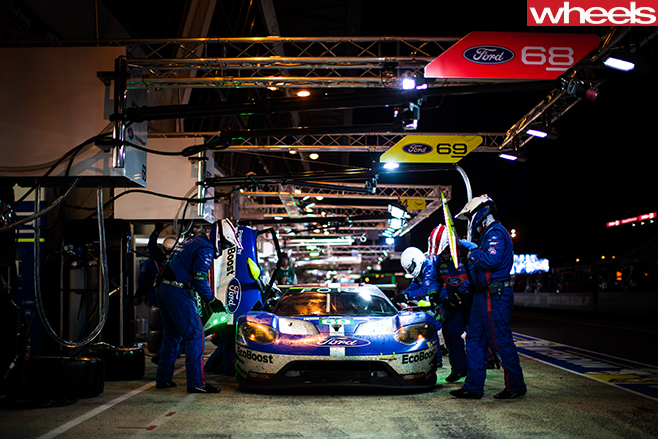
Le Mans really matters. Everyone from Bill Ford Jr to CEO Mark Fields are here to lend support. Technical chief Raj Nair, the man who pushed the GT program through, admits the car is “optimised not just for the class, but for here. It was designed for this track”.
Le Mans 2016 will be known forever as the one that got away for Toyota after the most heart-breaking finish in the race’s incredible 93-year history. But for much of the 24 hours the battle in GTE Pro is just as thrilling.
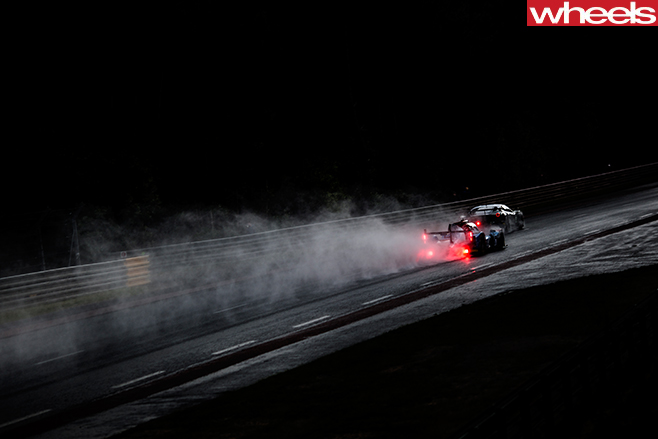
As the rain stops and the track dries, the race comes back to Ford. By 7.30 in the evening both works Ferraris are out, the Porsches are struggling for pace and the #68 Ford soars past the privateer Risi Competizione 488 to take the lead.
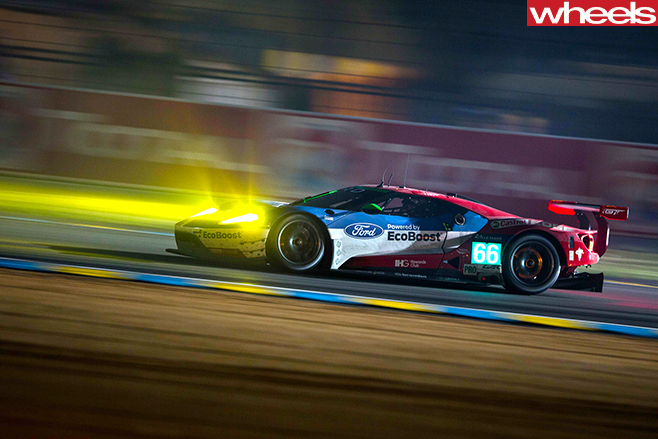
And the turbocharged V6 sounds like it’s gargling gravel as the traction control cuts in and out. As the light fades I walk out to the famous Dunlop Bridge and the GTs are easy to spot with their yellow headlights, and carry massive speed into the tight sequence that follows, yet look like they’re barely moving compared to the low-flying LMP1s that lap 30 seconds quicker.
Yet, despite the GT’s pace and the fact all four are still running after the #66 car is patched up and sent out, they just can’t shake off that awkward Ferrari, the leaders running within half a minute of each other for hours at a time and swapping positions several times.
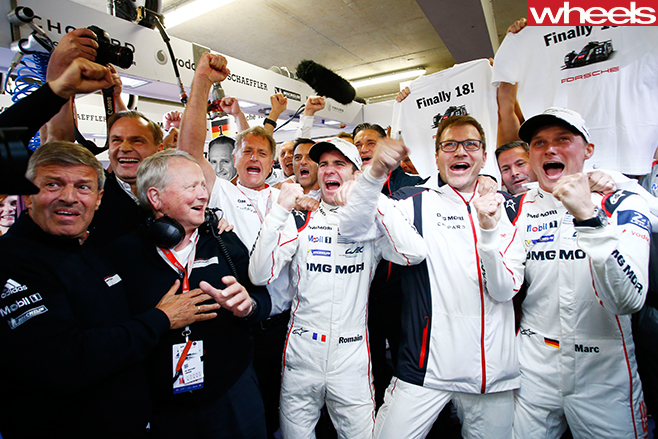
Ford’s desperation for a podium sweep creates some drama when, with 15 minutes to go, the timing screen announces the Risi car has to report to the pits to fix a broken position light (the cluster that shows where in class it’s running), after a complaint from Ford. The Ferrari stays out – the sort of thing you can get away with at Le Mans – and later counter-claims that Ford was speeding in a ‘slow zone’, equalising things.
The excitement caused by Toyota’s meltdown means few people are paying much attention when the class-winning GT crosses the line, and the Ferrari holds on to finish second and deny Ford the 1-2-3 it would have loved to put on the posters.
Somewhere I reckon Enzo is chuckling at that one.
Model: Ford Focus RS Engine: 2261cc 4cyl, dohc, 16v, turbo Max power: 257kW @ 6000rpm Max torque: 440Nm @ 2000-4500rpm Transmission: 6-speed manual Kerb weight: 1599kg 0-100km/h: 4.7sec Fuel economy: 8.1L/100km Price: $50,990 (estimated) On sale Now

